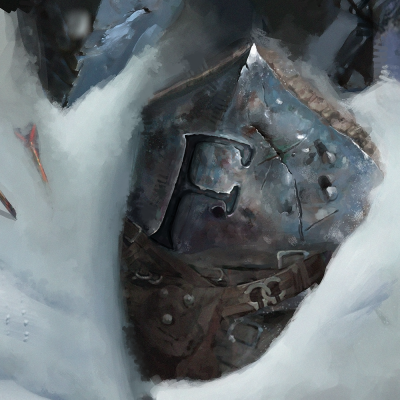This article is a continuation of FAB101 – Kano and the Wizard Class. If you haven’t read that or need a refresher, take a moment to do so before we continue.
Now then, you should be familiar with the mechanics of the Wizard class. But how do you play Kano in Classic Constructed? This article goes into depth about start of game process and which win conditions to play toward in a given matchup, including matchup sideboarding and how to break different Arcane Barrier setups.
Staring Down the Battlefield
The first hurdle to overcome when playing Wizard in CC is sitting down at the table with 30 life, as opposed to your opponent’s 40. You start the game at a distinct disadvantage, and many of the game’s aggressive decks will threaten up to half of your life total in a single turn! And of course, they aim to maintain that pressure across the entire game.
Steel yourself! You are a Wizard! The laws of time bend to your command, and that life total disparity won't last!
General Matchups and Sideboarding
When sideboarding, we have one concrete piece of information about our opponent's deck: their hero. Different heroes tend to have different levels of aggression and different pitch curves. As a general rule, a Guardian player will have more blue cards than a Warrior player, so they have an easier time blocking your damage. On the flip side, a Warrior player will be much more aggressive, requiring you to block more and leaving less room to set up. Below is a quick (but not definitive) guide to which heroes tend toward which playstyles.
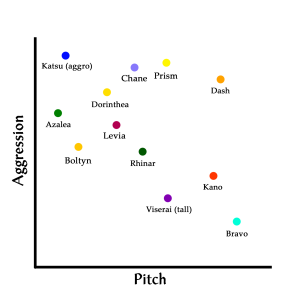
As a general rule, the higher the aggression of the hero you are facing, the worse their pitch is going to be. Against an aggressive deck, you don’t have the need for your Combo spells (refer to FAB101 – Kano and the Wizard Class for overviews on the types of spells in your deck), but your Activator spells are extremely potent. Sideboarding against aggressive decks usually means removing most cards that block for 2 or less, such as Tome of Aetherwind, Timesnap Potion, or Stir the Aetherwinds, and putting additional focus on cards like Aether Flare, Reverberate, and Sonic Boom.
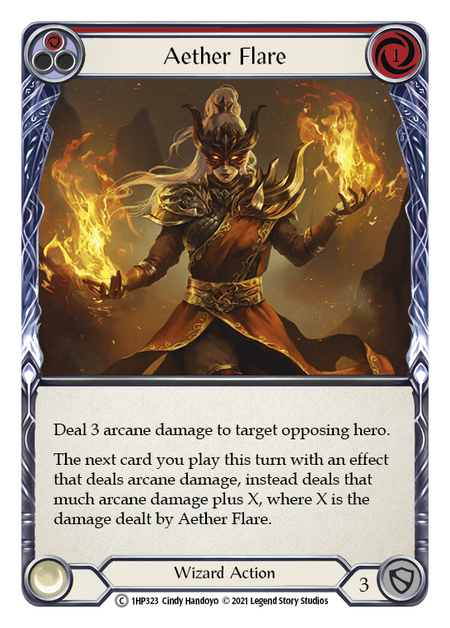
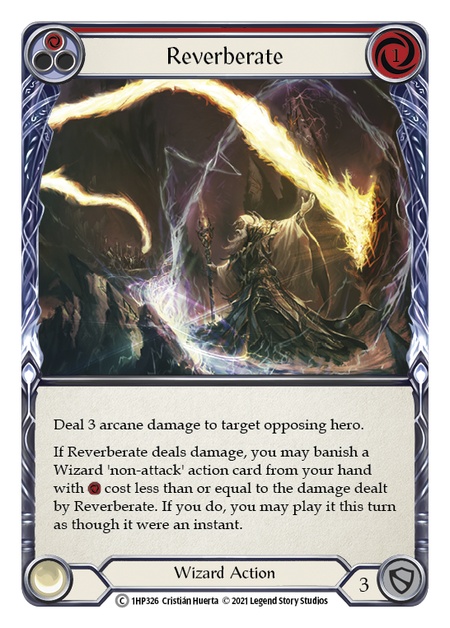

On the flipside, if you see a Bravo or a Dash facing you down, they are likely to be built with much higher pitch and Arcane Barrier. In these kinds of matchups, it is very important to maximize your Combo spells, as many other spells will not be able to break over 3 or 4 Arcane Barrier. When a game is going slow and defensive (as many of these games can), setting up your combo cards by pitching them for your Crucible of Aetherweave is often a very valid win condition. In these games, Activator spells are not nearly so strong, and you aren’t punished as heavily for running cards that block for 2.
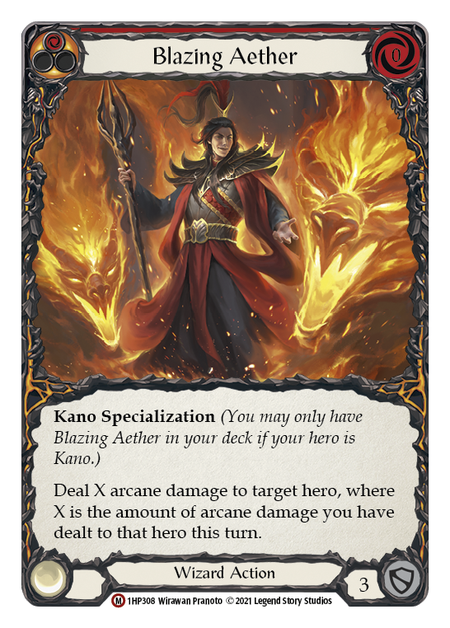
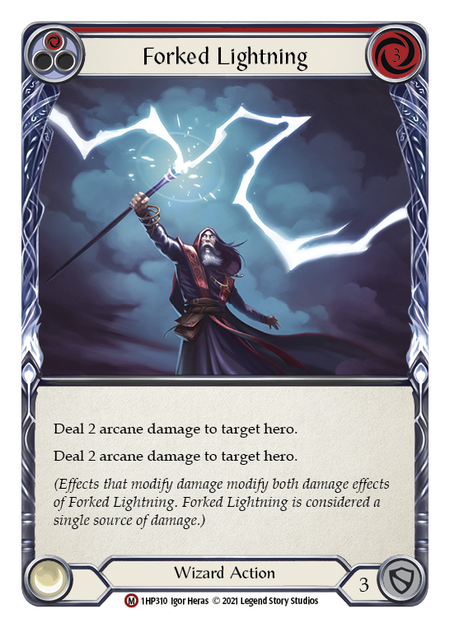
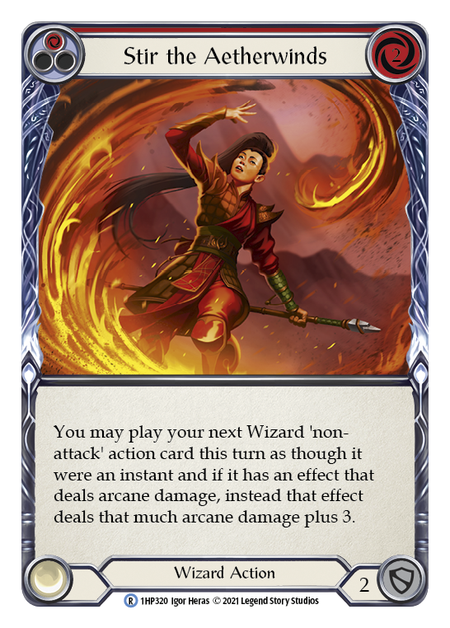
Pro Tip: Some heroes have different ways to combat Wizard, such as Azalea being able to disrupt your action economy, and Rhinar with the Intimidate keyword. Similarly, some traditionally aggressive heroes can be played with high pitch and low aggression, such as control Katsu or Prism, and some low aggression heroes can be played very aggressively, such as Viserai. It's not always possible to call an opponent's strategy from the revealing of their hero, so use everything you know to try to come to the right conclusion!
When you side out cards from your deck, you always want to go down to 60. Consistency is key as a Wizard, and running the minimum deck size serves a dual purpose:
- It lets you find your key matchup cards sooner, and
- It reduces the number of turns needed to cycle through your deck towards your combo.
Even if you have to remove some of your favourite cards (Lesson in Lava in high-pitch, defensive match-ups, or Tome of Fyendal in aggressive, punishing games), my recommendation is to assess what is absolutely critical to win and find your way down to 60.
Deciding on Your Playstyle
While many other decks have a definitive win condition by the time they hit the table, most Wizard decks maintain versatility right up to the final presentation of your deck. The same 80 card package can play lightning fast, using its efficient damage and multiple extenders to bring its opponent from 40 to 0 in a handful of turns, or slow and control-heavy, setting up for the late game to deal 48 damage in one fell swoop. Because of how many different ways there are to win a game as Wizard, the way you sideboard and the information your opponent shows you at the start of the game should heavily inform your playstyle.
After sideboarding, you want to immediately take note of how much Arcane Barrier your opponent is running in their equipment. The Arcane Barrier level your opponent is running is incredibly important to deciding your win condition- in fact, it may be the sole deciding factor in most matchups.
Arcane Barrier 0-2
Opponents who run 0-2 Arcane Barrier often come to this configuration through chance and disregard. Often, their Arcane Barrier is incidental to the equipment they chose to further their own strategy. They are not concerned about blocking; your job is to teach them why they should be.
Their gameplan is to remain the aggressor and to tempo you out of the game by forcing you to block, often with your entire hand. If you do lose tempo, try to default to this general turn structure:
- Block with 3 cards -> set a Damage spell in arsenal.
- Block with 3 cards, saving a blue -> play your Damage spell with Crucible of Aetherweave.
Even if you aren’t outputting as much pressure, because you are blocking for 9 each turn and they aren’t blocking at all, over the course of a 2-turn cycle you end up trading very evenly on damage. Your best cards here are Voltic Bolt, Aether Spindle, and Sonic Boom. If you can trade damage 1 for 1, staying 10 life below your opponent, you can almost always win. In some cases, because they can’t block, you can also race them using sources of multiplicative damage, namely Aether Flare and Blazing Aether, and just kill them first. Cards like Reverberate and Chain Lightning are also very important in this style.
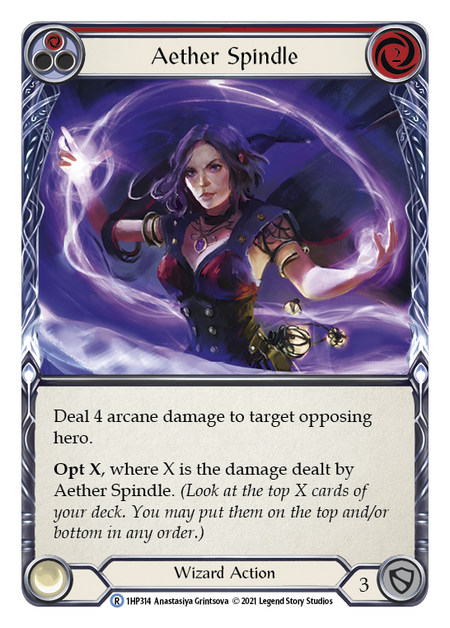

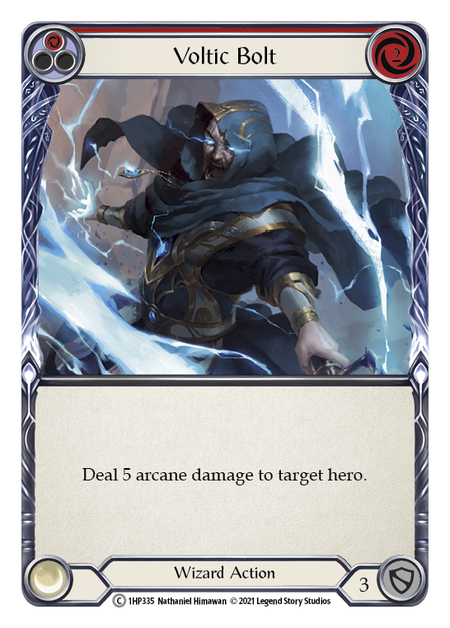
The 0-2 set is the simplest set of arcane barrier to play around, as you either play a traditional control role with high value spells, or you deal so much damage that they won’t know Solana from the Pits. Some decks that, in my experience, often run 0-2 Arcane Barrier are Katsu (aggro), Azalea, and Chane.
Arcane Barrier 3
Arcane Barrier 3 has a special place because it hits a whole lot of important breakpoints. First, it is the maximum you can block with a single (blue) pitch, so it’s the most efficient set of Arcane Barrier- provided the person wearing it can draw 1-2 blues per turn. Second, the majority of Activator spells that Wizards have available to them have a base damage of 3. Because of Crucible of Aetherweave, you can usually get cards like Sonic Boom and Lesson in Lava over the line to the 4 breakpoint- but there will be too much defence to make much use of tempo tools and activators, like you did against opponents with 0-2 Arcane Barrier. Cards like Voltic Bolt and Aether Spindle are still able to get over their barrier for chip damage though, which is going to define the majority of your mid-game while you work to find openings in their play or set up a combo if needed.
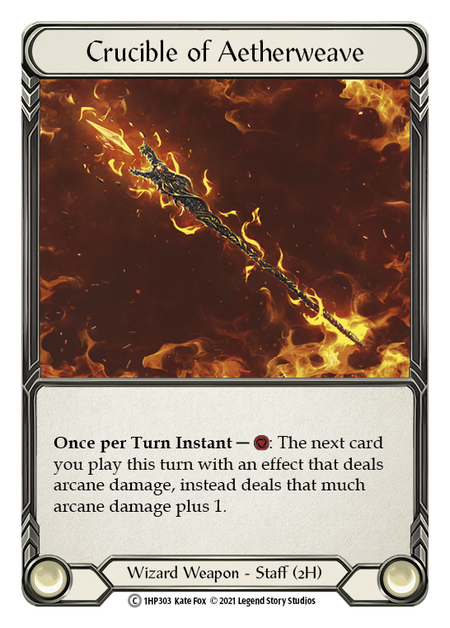
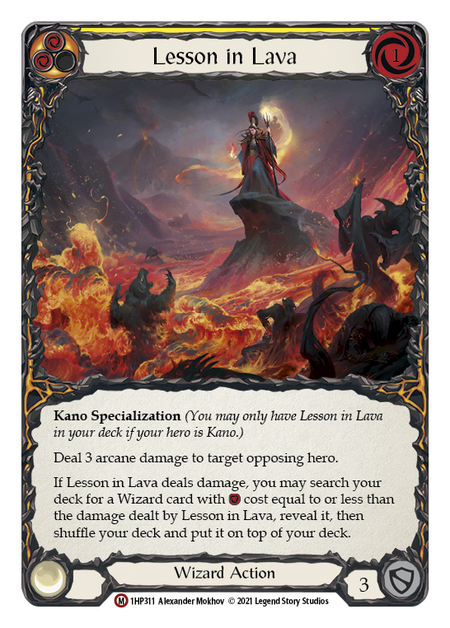
Lots of decks run 3 Arcane Barrier, especially now that the community has put in the work to find Wizard's stride, and the Blitz scene has shown the explosive power of the class. While it might seem difficult to get over the line for opponents with 3 Arcane Barrier, there are a few other factors that go into how they use that.
First, your opponent can only block with the pitch they have in their hand. A hybrid Warrior player may have 3 Nullrune equipments, but be holding a hand of 4 red cards, in which case they either behave as if they have no Arcane Barrier or they spend 3 cards from their hand. Both outcomes are favourable.
To illustrate a contrasting consideration, some aggressive Guardian decks will also run 3 Arcane Barrier; and while they have plenty of blue cards to afford it, they don't apply the same amount of pressure, so you have the freedom to attack at the end of their turn while they have no cards left to pitch. This often involves taking 3-6 damage, but with this process you can make similar exchanges as you do with opponents running 0-2 Arcane Barrier.
Arcane Barrier 3 is an important breakpoints. It is the maximum you can block with a single (blue) pitch, and the majority of straight arcane damage spells have a base damage of 3.
Despite this, when an opponent has 3 arcane barrier, it is still important to include the combo pieces in your deck. If they're able to defend your damage too easily, you will still need that extra win condition to push yourself past the line.
Arcane Barrier 3 is the most common set for almost all midrange decks I’ve run into, but in particular watch out for Dorinthea (hybrid), Rhinar, and Viserai (midrange).
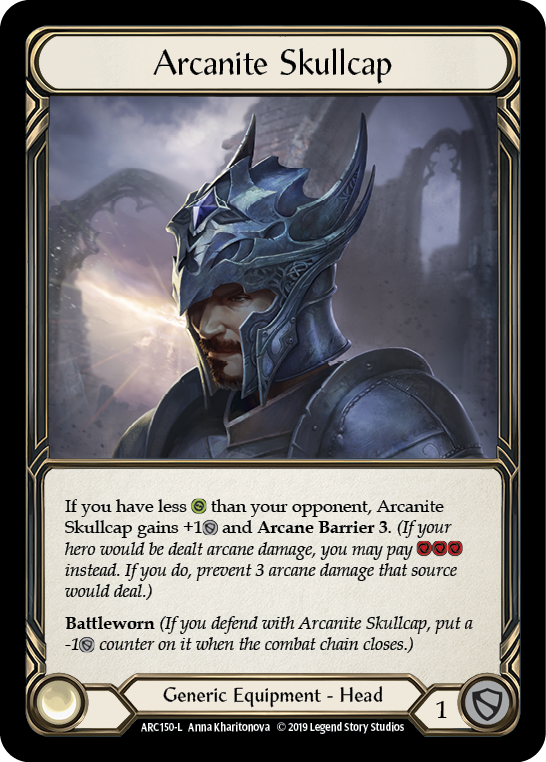
Dishonourable Mention: Arcanite Skullcap
While Skullcap has the highest arcane barrier of any Equipment, it is attached to a condition that is extremely difficult to achieve when matched against a Wizard player. From a Wizard player’s perspective, Skullcap effectively has no Arcane Barrier at all. If you see your opponent running this and nothing else, you can strategize as if you're up against Arcane Barrier 0-2.
Arcane Barrier 4+
When your opponent is running 4 or more Arcane Barrier, that means they are very concerned about what you have to offer, and most often your opponent will be forfeiting all of their strong equipment to stop you (except in the case of Mechanologist and Wizard, who naturally have Arcane Barrier 3 and 4, respectively). This strategy walls out almost everything Wizard can do, being able to avoid Activator spells almost entirely and barely being scratched by Damage spells like Voltic Bolt. This makes it extremely difficult to push damage against your opponent, and it allows your opponent to justify pitching both a blue and a red, doing a fantastic job of preserving their late game threat density. This can become extremely dangerous the longer the game goes on, and is easily the most difficult Arcane Barrier setup to deal with. And in these games, there are two major ways to force opportunities to deal damage and make progress.
First, the method that is both easier and riskier. Consider this: your opponent is regularly making full use of their Arcane Barrier, blocking with 2 cards from hand. This means 2 cards fewer for them to hit back with. For many control decks, this isn’t much of an issue because they are built around playing from 1- or 2-card hands; however, the benefit for you comes after they’ve played out their weaker turn. By using your action point to force them to block on your turn, you’ve now made them vulnerable on their turn, giving you the opportunity to push some damage through. This is key to slowing down decks such as Mechanologist, who have both high Arcane Barrier and high aggression.
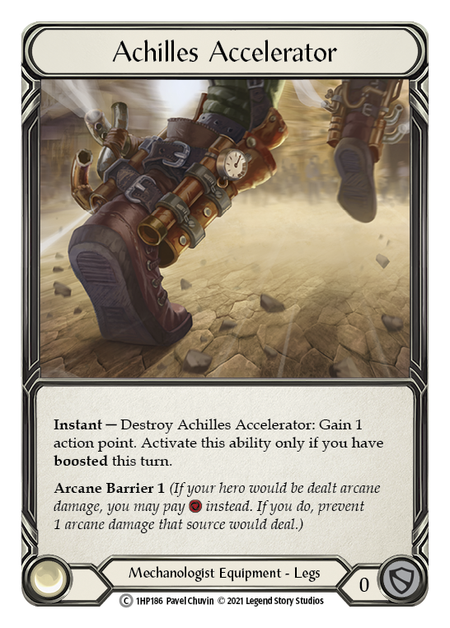
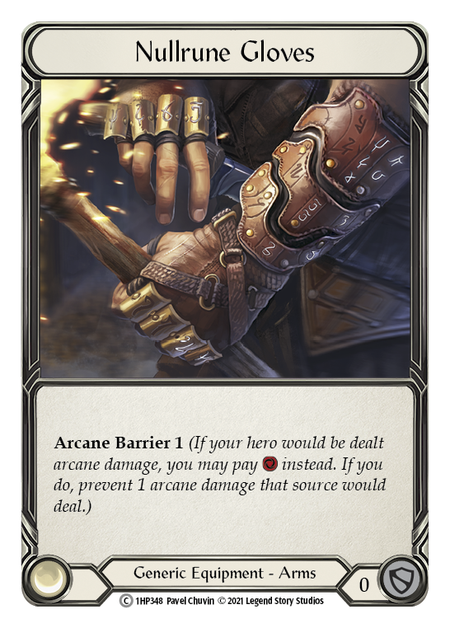
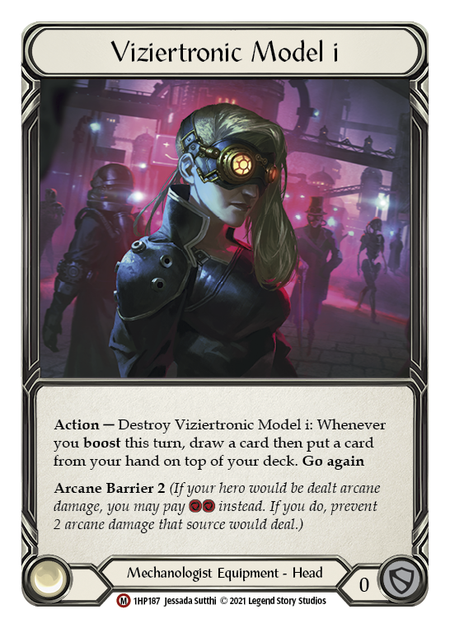
The second method is combo. Even with 4 Arcane Barrier, your opponent can only block a fraction of the classic Wizard OTK. Throughout the game, you want to be pitching Stir the Aetherwinds, Forked Lightning, and Blazing Aether, even if your only reason for pitching is to activate Crucible of Aetherweave for no effect. You want to be placing these cards close to each other, interspersed by a few blues; and once you start seeing the cards you pitched at the start of the game come back, you should have a good idea how far away your combo pieces could be. There are more advanced setups to be able to consistently hit your combo on your top deck during your opponent’s turn, but as a beginner I recommend using Timesnap Potions, Energy Potions, and drawing your combo to play on your turn instead. The downside here is that, due to your intense need for cards and resources, you'll have to take damage on your last turn- but so long as you can survive that, you should have the game in the bag.


Ideally, a mixture of both strategies should be used, as even a double Blazing Aether on a Stir the Aetherwinds and Forked Lightning only deals 27 damage when each step is blocked for 3. Playing purely towards the combo isn’t always going to be enough. Decks with high pitch and Arcane Barrier 4 are always going to be the most difficult matchups you will face as a beginning Wizard, but they are also the best to learn the mechanics against.
Decks that employ the arcane barrier 4+ strategy are Bravo, Dash, and Kano.
Practicing and Advancing
At this point you may have lost track of the fact that we haven't even left the start-of-game procedure! But even in that, it should help you decide how to play in certain situations and games. Everything Wizard does is situational, from its sideboarding decisions to its gameplan and win condition; so no article I could write will ever be the be-all and end-all of wizard strategy. It will be largely up to you to take this wildly generalized advice and apply it to your local Constructed scene. However I do have some tips about how to practice your wizarding;
- This was mentioned in my last article but I’ll say it again: test your limits. Overextend, make stupid plays that may or may not wildly pay off, and figure out a mixture that works best for you. As much as I could tell you when the best times to play on your opponent’s turn are, the only way for you to properly understand them is to miss the mark twenty times first.
- Try consciously using Marker Cards. These are unique cards that you pitch early in the game that mark when you’ve cycled through your entire deck. I use Chain Lightning, as I only use a single copy, but pitching two different blues together can also work. Using this technique means you never have to exactly count the number of cards in your deck.
- Play games against Guardian. This is very specific, but Guardian is the only deck that teaches you how to find openings in your opponent’s play, how to get rid of cards from their hand, and how to set up a massive OTK, all while not being put under much tempo pressure. It is not easy to win, even for experienced players, but it is extremely educational and I highly recommend it.
- Finally, DO NOT GIVE UP. Many people say that wizard has the highest skill floor of any deck so far, and as a beginner you should expect to encounter a lot of challenges. It may be difficult, it may not make sense, but keep at it. While Wizard is the most challenging class to learn, once you understand how it works it also becomes by far the most engaging and rewarding. You can do this!



